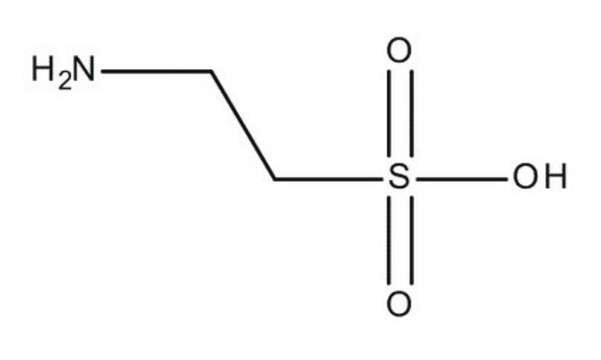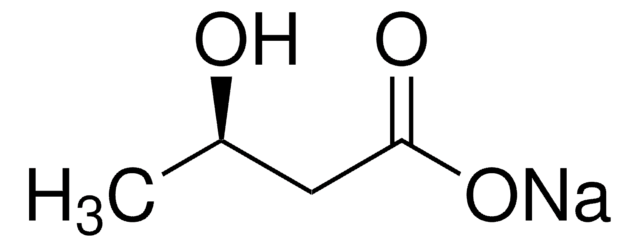T4571
Taurine
Fabricação farmacêutica
Sinônimo(s):
2-Aminoethanesulfonic acid
About This Item
Produtos recomendados
fonte biológica
non-animal source
Nível de qualidade
Ensaio
≥98.5%
Formulário
crystalline powder
técnica(s)
cell culture | mammalian: suitable
Impurezas
endotoxin, heavy metals, trace metals, tested
pf
>300 °C (lit.)
solubilidade
H2O: ≥100 mg/mL
atividade externa
cytotoxicity, tested
cadeia de caracteres SMILES
NCCS(O)(=O)=O
InChI
1S/C2H7NO3S/c3-1-2-7(4,5)6/h1-3H2,(H,4,5,6)
chave InChI
XOAAWQZATWQOTB-UHFFFAOYSA-N
Informações sobre genes
rat ... Ppm1a(24666)
Procurando produtos similares? Visita Guia de comparação de produtos
Descrição geral
M-Clarity Program
Our comprehensive portfolio of upstream process chemicals not only provides biopharmaceutical manufacturers with high-quality raw materials for production of classical and novel therapies, but also helps them get to market faster and simplify regulatory challenges. Trust us to deliver supply chain transparency and reliable sourcing around the globe, streamlining your product qualification with best-in-class regulatory support and service.
Aplicação
Ações bioquímicas/fisiológicas
Informações legais
Código de classe de armazenamento
11 - Combustible Solids
Classe de risco de água (WGK)
WGK 2
Ponto de fulgor (°F)
Not applicable
Ponto de fulgor (°C)
Not applicable
Equipamento de proteção individual
dust mask type N95 (US), Eyeshields, Gloves
Escolha uma das versões mais recentes:
Já possui este produto?
Encontre a documentação dos produtos que você adquiriu recentemente na biblioteca de documentos.
Os clientes também visualizaram
Nossa equipe de cientistas tem experiência em todas as áreas de pesquisa, incluindo Life Sciences, ciência de materiais, síntese química, cromatografia, química analítica e muitas outras.
Entre em contato com a assistência técnica







